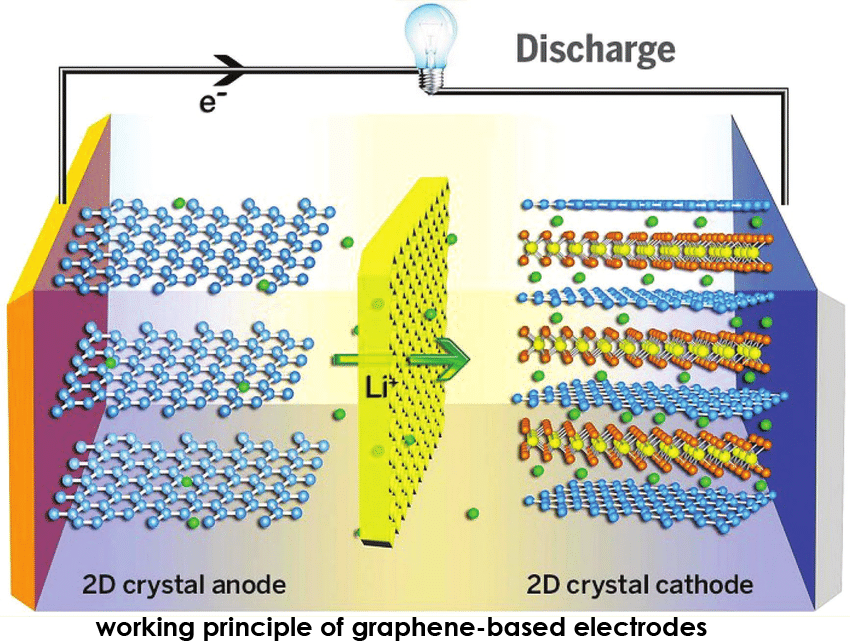In a world increasingly reliant on renewable energy, the demand for effective energy storage technologies has never been greater. As we work to capture the power of the sun, wind, and other renewable sources, we face constraints in existing energy storage methods. Enter graphene batteries, a ground-breaking breakthrough that has the potential to alter the energy storage environment. This article investigates how incorporating graphene into lead-acid batteries improves their performance and prospective applications, making them important in modern energy systems.
Understanding Graphene
What is Graphene?
Graphene is a unique substance composed of a single sheet of carbon atoms organized in a hexagonal lattice. Since its discovery, it has received a lot of interest for its remarkable features, which include high electrical conductivity, mechanical strength, and a large surface area. Consider a substance that is both extremely light and strong—this is the essence of graphene. It is the thinnest substance known to humanity, but its strength exceeds that of steel.
The Role of Graphene in Energy Storage/Batteries
Graphene’s qualities make it an excellent contender for improving battery technology. Researchers and businesses alike are investigating its uses in a variety of industries, including energy storage because it has the potential to address some of the long-standing issues connected with traditional batteries.
Enhancing Lead-Acid Batteries with Graphene
Overcoming Limitations of Traditional Lead-Acid Batteries
Lead-acid batteries have been around for more than 150 years. They are dependable and reasonably priced but have considerable downsides. Some such constraints are:
- Low energy density: Traditional lead-acid batteries can be bulky, making them less efficient for modern applications.
- Short cycle life: Frequent charging and discharging causes quick wear and reduces battery life.
- Slow charging rates: Users frequently have to wait a long time for their batteries to recharge.

Key Advantages of Graphene Integration
Integrating graphene into lead-acid batteries addresses these restrictions and provides a number of benefits:
Improved Conductivity
Graphene’s high electrical conductivity enables faster charge and discharge speeds. This improvement results in shorter charging periods, making graphene batteries ideal for high-demand applications such as electric vehicles and renewable energy systems. Imagine charging your electric automobile in half the time—with graphene batteries, this is becoming a reality.
Enhanced Cycling Stability
One of the most important benefits of graphene incorporation is increased cycling stability. Graphene improves the mechanical strength and structural integrity of lead-acid batteries, hence reducing electrode deterioration and sulfation. This implies that batteries last longer, require less maintenance, and perform better over time. Consider it as providing a strong protective shield for your batteries, ensuring that they perform properly.
Increased Energy Density
Graphene’s enormous surface area enables for more active material loading in lead-acid batteries. This breakthrough results in higher energy densities, allowing for increased energy storage capacity without expanding the battery’s footprint. For customers, this means smaller, lighter batteries with more power—an ideal match for today’s compact electronic gadget designs.
Temperature Tolerance
Graphene also excels at heat management. Its high thermal conductivity effectively distributes heat, lowering the possibility of thermal runaway, a significant worry in battery safety. This characteristic enables graphene-based lead-acid batteries to run safely across a wide temperature range, from blistering heat to freezing cold, making them suitable for a variety of applications.

Applications of Graphene-Based Lead-Acid Batteries in Energy Storage Systems
1. Grid-Level Energy Storage
Graphene batteries have the potential to revolutionize grid-level energy storage. They enable load shifting, peak shaving, and renewable energy integration, thereby stabilizing the grid and providing a consistent power supply. For example, a power provider may utilize graphene batteries to store extra energy generated on sunny days and release it at peak demand times to avoid disruptions.
2. Residential and Commercial Energy Storage
In residential contexts, graphene batteries can supplement solar photovoltaic (PV) systems by storing excess energy produced during the day for use at night. Their small size and high energy density make them excellent for urban settings where room is limited. Imagine a home powered solely by solar energy, with a graphene battery effortlessly storing power for later use.
3. Telecommunications and Backup Power
Telecommunications infrastructure is significantly reliant on backup power options. Graphene batteries have fast response times and long cycle life, allowing important processes to continue even when the power goes out or an emergency occurs. Reliability is critical in data centers and hospitals, where every second matters.
4. Automotive and Transportation
The car industry hopes to benefit greatly from graphene batteries. In hybrid and electric automobiles, these batteries improve energy storage performance while reducing weight, and increasing total vehicle efficiency. Manufacturers are enthused about the prospect of incorporating graphene batteries into their production lines, which can result in safer and more efficient vehicles.
Future Outlook
The future of graphene-based batteries seems promising, with continuous research aimed at enhancing performance and cost-effectiveness. Scientists are looking for ways to improve manufacturing processes and increase production, making graphene batteries more accessible to the market.
As research develops, graphene batteries may become a regular component in a variety of industries, accelerating the transition to more sustainable energy options. This potential is not limited to large-scale applications; everyday users will profit from advances in energy storage technology.

FAQs
1. What makes graphene superior to conventional materials?
Graphene’s unique structure and features enable higher electrical conductivity, thermal management, and mechanical strength than standard battery materials.
2. How do graphene-based lead-acid batteries compare to lithium-ion ones?
While lithium-ion batteries are lighter and have higher energy densities, graphene batteries can provide greater endurance and faster charging times, making them a viable option for a variety of applications.
3. What is the environmental impact of making graphene-based batteries?
The environmental impact of graphene varies according to the production methods utilized. Researchers are attempting to create more sustainable and eco-friendly production methods in order to reduce environmental impact.
4. Can the batteries be recycled?
Yes, the materials used in graphene batteries can be recycled. As technology advances, recycling procedures for recovering valuable elements from wasted batteries are being developed, contributing to a circular economy.
Conclusion
Graphene-based lead-acid batteries mark a substantial advance in energy storage technology. By overcoming the constraints of traditional lead-acid batteries, they use graphene’s unique qualities to improve performance, durability, and versatility. As we progress toward a more sustainable energy future, graphene batteries will play an increasingly important role in enabling widespread adoption of renewable energy sources and fostering innovation across a variety of industries.
In a world where energy efficiency is critical, graphene batteries are more than an improvement; they are a revolution. Embrace change and stay tuned to see what this amazing technology has in store for our energy landscape.
